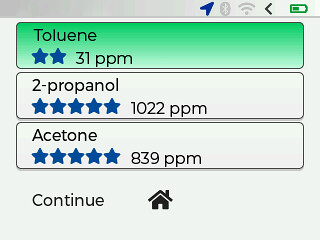On a hot summer day, with temperatures nearing 88°F (31° C), the owner of a self-storage facility found himself dealing with a serious issue. Several customers had complained about noxious odors emanating from one of the lockers. With the situation becoming unbearable, the owner decided to call the authorities, leading to the dispatch of the regional hazmat team. Witnesses reported a range of odors near storage unit #2109. The odors ranged from sweet to pungent, even suffocating, making it clear that something was unusual.
Initial Reconnaissance
Multi-gas analysis at the bottom of the closed locker door indicated a Lower Explosive Limit (LEL) of 2% and Photoionization Detector (PID) readings ranging from 500 to 3,000 parts per million (ppm). These readings indicated a presence of volatile chemicals. Opening the unit door, the hazmat team discovered numerous unlabeled cardboard boxes soaked with liquid. Despite the steady LEL readings, the PID readings fluctuated wildly, confirming the presence of chemical products. But what chemicals were they? And how much was present?
Identifying the Chemicals
Armed with an XplorIR, the hazmat technician approached unit 2109. After only a few seconds, the device read “Sample Detected.” Just thirty seconds later, the XplorIR reported a mixture of volatile organic compounds (VOCs) and their corresponding concentrations.
As the technician continued to survey the locker, the XplorIR identified other VOC mixtures with varying ppm readings. The information displayed on the XplorIR screen showed that all readings were below the Immediately Dangerous to Life and Health (IDLH) levels. This critical information guided the next steps for the hazmat team.

VOC Mitigation and Resolution
With the situation under control, the team began to vent the locker and overpack the poorly stored chemicals. Within a few minutes, the team identified the chemical, its source, concentration, and began a plan to clear the scene. Chemical threat identification also plays a critical role in emergency preparedness and response. By understanding the specific hazards posed by different chemicals, emergency responders can develop effective strategies for containment, evacuation, and decontamination. Furthermore, accurate identification is crucial for medical professionals in treating exposure cases and preventing long-term health effects.
Conclusion
This incident highlighted the importance of having the right tools and training for hazardous material incident response. The ability to identify over 5,600 gases and vapors and quantify thousands at your fingertips with the XplorIR, allowed the hazmat team to quickly and safely prevent any further escalation.